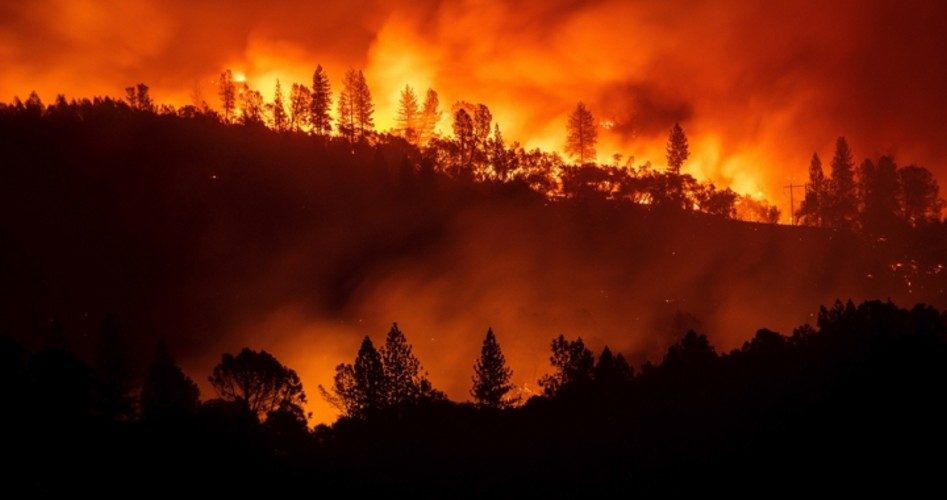
As the Camp Fire in Northern California and the Woolsey Fire on the northern outskirts of Los Angeles burn out of control, President Trump declared a federal emergency in order to get more funds for firefighting to the burn-savaged areas.
But after that declaration, the president then threatened to withhold future federal funding should the State of California not clean up the management of its forests.
As of Saturday, the Camp Fire in Butte County has destroyed more than 6,400 residences and over 260 commercial buildings. Cal-Fire, the state’s forestry and fire management agency lists 15,000 additional structures as “threatened.” The fire has killed nine people to date. The town of Paradise, California, has been almost completely destroyed. Cal-Fire says that this fire is 20 percent contained at this point.
The Woolsey Fire, which is burning just to the north of Los Angeles, has destroyed 70,000 acres thus far. No fatalities have yet been reported. Cal-Fire lists 3,500 buildings currently at risk and in the fire’s path, including the mansion where ABC’s The Bachelor and The Bachelorette programs are recorded.
Trump is in Paris for a meeting with French President Emmanuel Macron. Early on Saturday morning he tweeted, “There is no reason for these massive, deadly and costly forest fires in California except that forest management is so poor. Billions of dollars are given each year, with so many lives lost, all because of gross mismanagement of the forests. Remedy now, or no more fed payments!”
While Trump is right to blame forest mismanagement for the ferocity of these deadly fires, he’s wrong to lay it all at the feet of California state and local governments. The sad fact is that many of the roadblocks contributing to proper forest management in California are federal policies — not state policies.
That is not to say that the local and state governments in California don’t share in the culpability for these out of control fires. While California’s Governor Jerry Brown throws up his hands and blames climate change for the fires, several state and local policies contribute to their severity. Poor forest management has led to literally millions of dead trees cluttering up already crowded forests. Dead and sickly trees make excellent fuel for forest fires.
Local zoning regulations have made it easier to build homes in areas which are extremely prone to fires as well.
Some state program to clear out the detritus from the forests in concert with common sense-controlled burns and timber sales need to be implemented in the state. And, as the President noted earlier this year, winter rainfalls must be harvested more effectively for not only fire control, but to assist in the state’s ongoing water shortage issues.
But Governor Brown does not see fit to address those needs. Instead, he simply plugs his ears and shouts, “climate change” over and over again. “We’re fighting nature with the amount of material we’re putting in the environment, and that material traps heat, and the heat fosters the fires, and the fires keep burning,” Brown said earlier this year. Then, ala the UN’s Intergovernmental Panel on Climate Change (IPCC) the governor called for extremely costly measures, which would, “shift the weather back to where it historically was.”
But a lot of blame falls upon the shoulders of the federal government as well. Regulations put in place by the Environmental Protection Agency (EPA) and the Endangered Species Act have made it so difficult for state and local entities to engage in common sense forest management that they fail to do so, resulting in the crowded and dying forests that we see in California. The very same rules and regulations put in place to protect the Spotted Owl and the Kangaroo Rat are the very things that are, ultimately, destroying their habitats.
Also, fire suppression policy, which also contributes to the amount of dead and dying trees, is a federal policy brought to us by the U.S. Forest Service.
Overall, the actual numbers of forest fires are actually declining, but in places like California, the ferocity of fires is increasing, simply because of the amount of fuel available.
So, when the president blames California government’s mismanagement for the fires that are ravaging the state, he needs to also look at the federal bureaucracies who have tied local governments, timber companies, ranchers, and farmers up in so much red tape that it makes common sense forest management almost impossible.
Photo: AP Images



